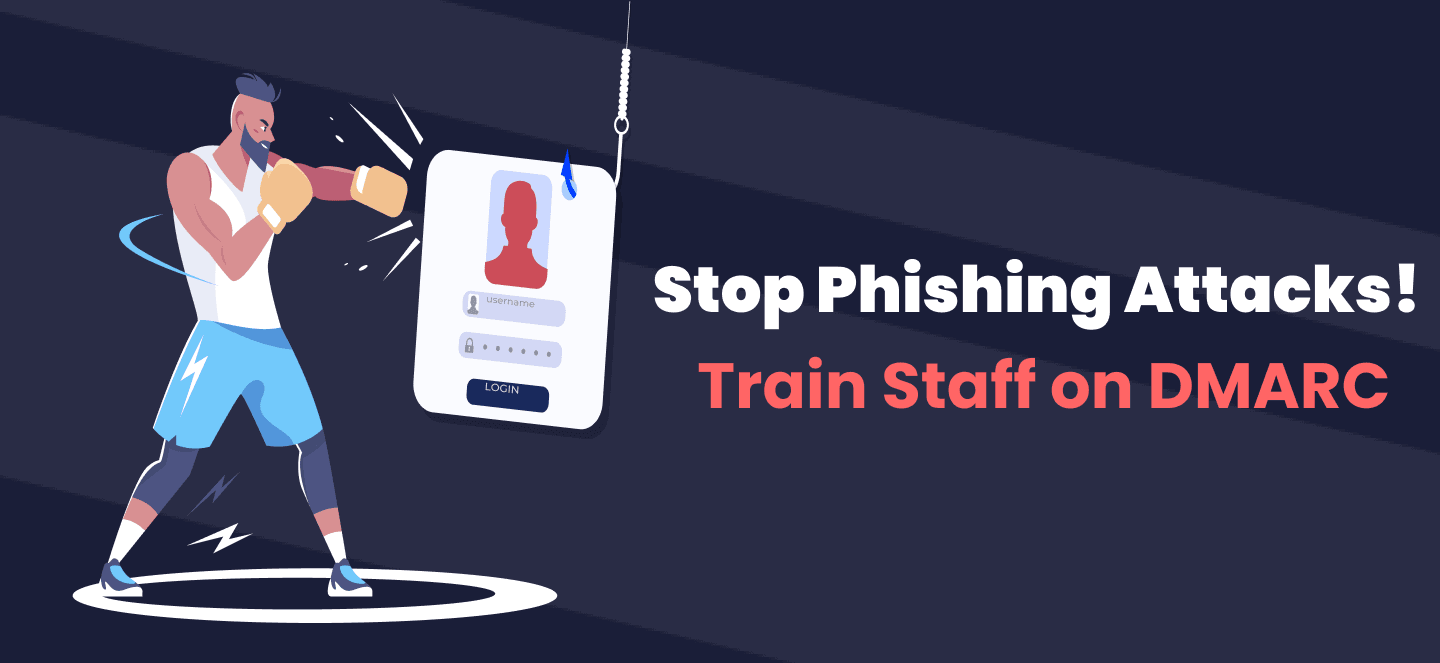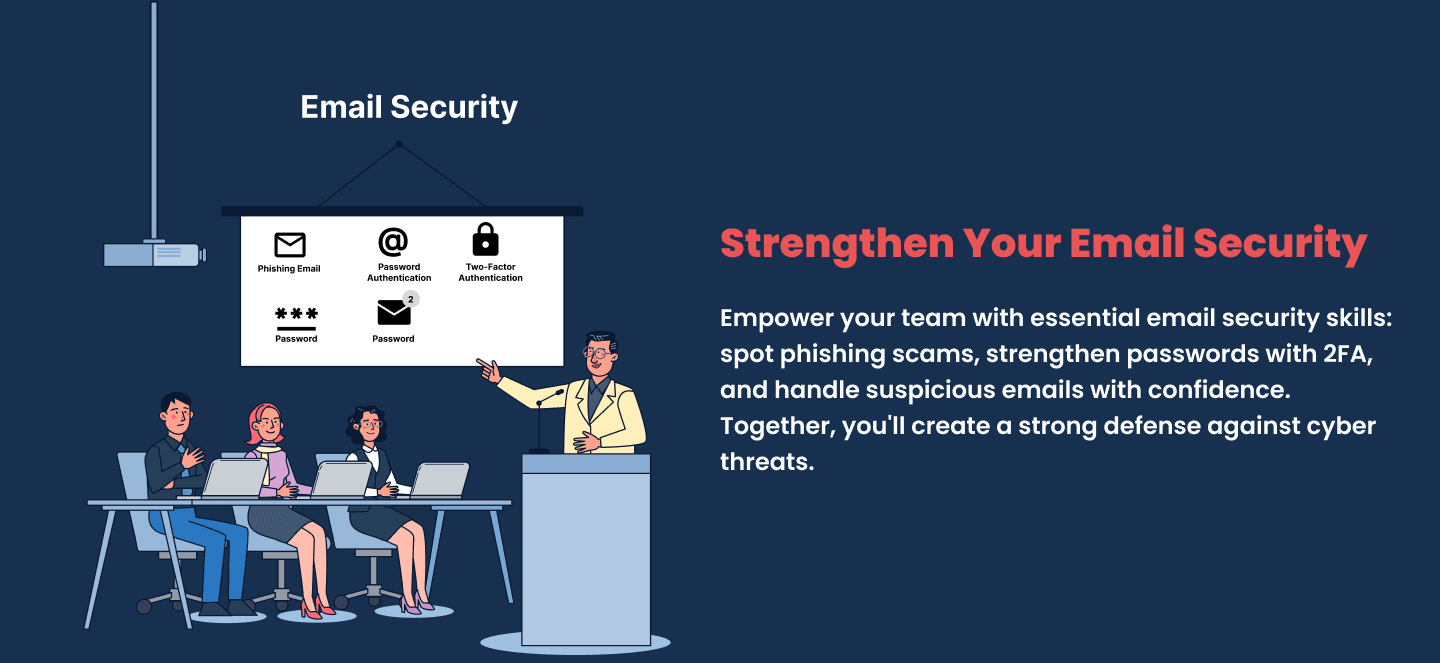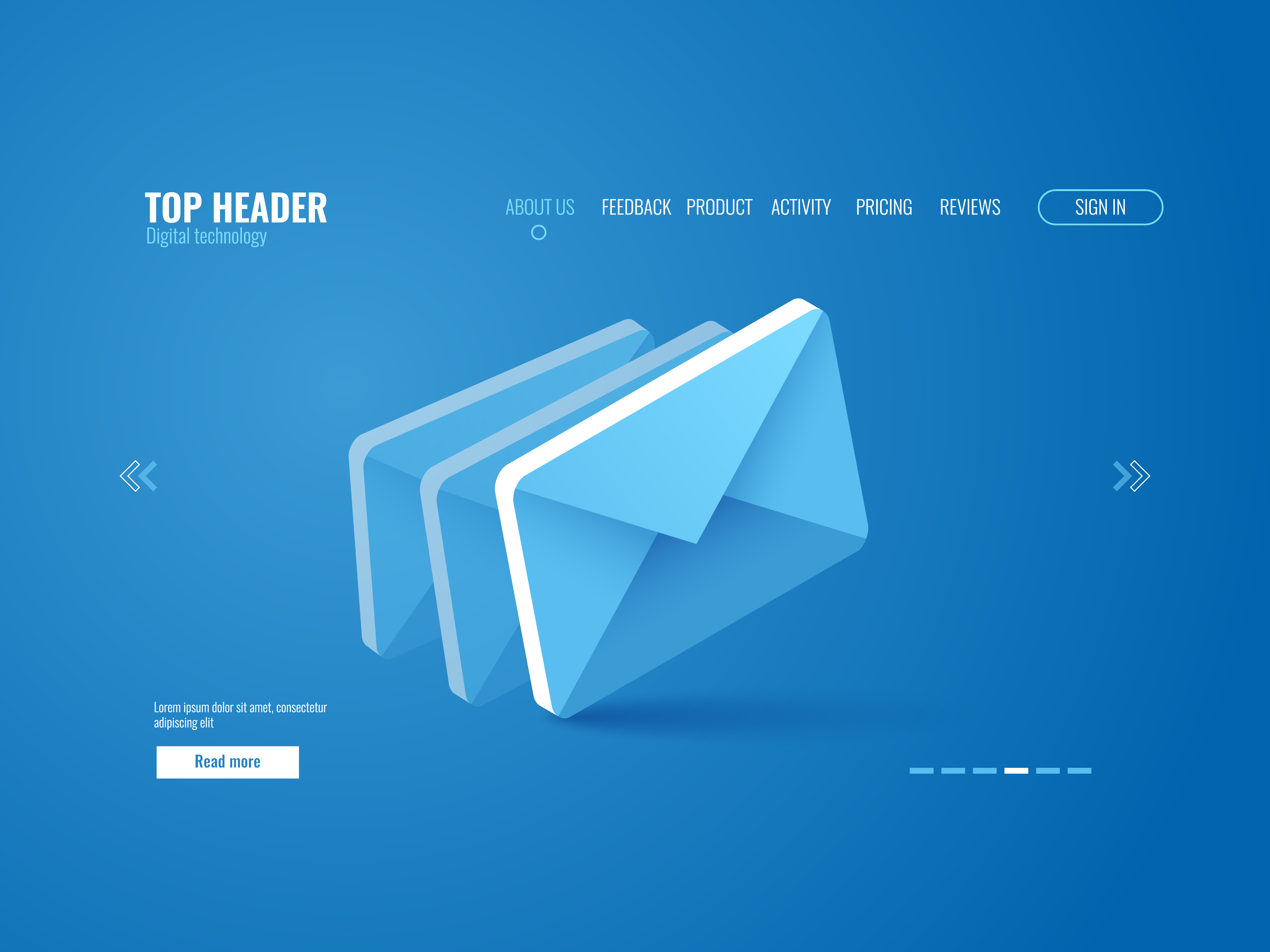Advice for Teaching Staff Members About DMARC Records, Best Practices, and Email Security
This article explores DMARC records and email security best practices. It advises teaching staff to safeguard against phishing, spoofing, and email attacks, ensuring your organization’s digital communications remain secure, efficient, and trustworthy.

In today's world, email is like our virtual office—it's where we handle everything from important client communications to sharing cat memes with colleagues. But here's the catch: as much as we rely on email, it's also a prime target for cyber attackers. That's where [**DMARC**](https://www.yourdmarc.com/tools/dmarc-lookup) comes in. DMARC is like a security filter for your email, keeping the bad guys out and your information safe.
But here's the thing: having DMARC in place is only half the battle. We need our team to be the **first line of defense** too. Think of it like giving everyone in the office a crash course in spotting sketchy emails and keeping our digital doors locked tight.
So fasten your seatbelt! We're going to go into the realm of DMARC regulations and email security since, in terms of safeguarding our online workspace, information really is power.
**Email Security Risks**
Don't be calmed by the seemingly harmless world of your inbox. **Deceptive emails** disguised as trusted senders can be a digital Trojan horse. Phishing attacks try to trick you into revealing sensitive information while spoofing attempts to steal your trust with forged email addresses. Malware, the hidden danger in attachments, is ready to disrupt your system. These online dangers are more than just irritations; they're crafty thieves intent on stealing your company's valuable data. Stay alert and safeguard your information and digital assets from potential compromise. They can lead to financial losses, data breaches, and even tarnish your reputation faster than you can say "ahoy."
But don't be afraid! Knowledge is your best defense against these Mischief-makers. Your staff will be better equipped to recognize warning signals and avoid danger if they are aware of these hazards. So hoist the sails and batten down the hatches—It's time to handle email security challenges like skilled sailors.
**Overview of DMARC**
Forget spam filters, **DMARC** is the email security superhero you need! This champion, short for ["Domain-based Message Authentication, Reporting, and Conformance,"](https://www.yourdmarc.com/tools/dmarc-generator) throws a knockout punch to sneaky phishing and spoofing attempts.
Think of DMARC as your inbox's Iron Man. It works alongside two other email security powerhouses: SPF and DKIM. SPF acts like a bouncer, verifying only authorized email senders for your domain. DKIM adds a digital fingerprint, ensuring emails are authentic.
So, the next time a suspicious email claiming to be your bank or a "distant cousin" lands in your inbox, DMARC is on guard, keeping your data safe and your inbox a haven from online villains!
**Best Practices for DMARC Implementation**
Implementing [DMARC](https://www.yourdmarc.com/tools/dmarc-lookup) involves several best practices, including creating a DMARC policy, configuring SPF (Sender Policy Framework) and DKIM (DomainKeys Identified Mail) records, and monitoring DMARC reports. These practices ensure that emails sent on behalf of an organization are authenticated and authorized, reducing the risk of unauthorized emails reaching recipients' inboxes.
**Tips for Educating Employees About Email Security**

Alright, let's dive into email security in a way that feels like chatting with a friend over coffee.
First off, we've got these nifty training sessions on spotting those tricky phishing emails. It's like giving your team a heads-up on how to spot a scam—it's all about looking out for each other.
Then, there's the whole deal about beefing up those passwords and adding an extra layer of security with two-factor authentication. It's like locking your front door and setting up a buddy system to make sure everyone's safe.
And last but not least, we've got some handy guidelines for dealing with any fishy emails or sketchy attachments that pop up in their inbox. It's all about having each other's backs and knowing when to say, "Hey, something's not right here."
If you all stick to these principles, your team will have each other's backs and work together smoothly to stop cyberattacks and online fraud.
**DMARC Shield Your Inbox**
DMARC records are like the backstage pass to your email security. They hold all the important instructions about how your organization's emails should be handled and checked by email providers. Think of it like setting the rules for who gets to come to your party and how they should behave.
When you get DMARC reports and feedback loops, it's like getting a report card on how your emails are doing. You can see if they're getting delivered properly or if there are any security threats lurking around. It's like having a radar that helps you spot any potential trouble.
Understanding DMARC records is like having a secret weapon in your email security arsenal. It helps you fine-tune your settings to make sure your emails are safe and sound. And if there are any security incidents, you'll be ready to respond quickly and effectively. It's like being the captain of your email ship, steering clear of trouble and keeping your crew safe from harm.
**Conclusion:**
To protect your company from cyber attacks, it’s crucial that your team really understands email security and DMARC regulations. Establishing solid DMARC practices, giving employees through training, and being alert to potential risks are key steps in building a strong defense against email threats. By working together and prioritizing security, we can safeguard our sensitive information and maintain our company’s good reputation. When we all take security seriously, we stay one step ahead of potential threats.
In today's world, email is like our virtual office—it's where we handle everything from important client communications to sharing cat memes with colleagues. But here's the catch: as much as we rely on email, it's also a prime target for cyber attackers. That's where [**DMARC**](https://www.yourdmarc.com/tools/dmarc-lookup) comes in. DMARC is like a security filter for your email, keeping the bad guys out and your information safe.
But here's the thing: having DMARC in place is only half the battle. We need our team to be the **first line of defense** too. Think of it like giving everyone in the office a crash course in spotting sketchy emails and keeping our digital doors locked tight.
So fasten your seatbelt! We're going to go into the realm of DMARC regulations and email security since, in terms of safeguarding our online workspace, information really is power.
**Email Security Risks**
Don't be calmed by the seemingly harmless world of your inbox. **Deceptive emails** disguised as trusted senders can be a digital Trojan horse. Phishing attacks try to trick you into revealing sensitive information while spoofing attempts to steal your trust with forged email addresses. Malware, the hidden danger in attachments, is ready to disrupt your system. These online dangers are more than just irritations; they're crafty thieves intent on stealing your company's valuable data. Stay alert and safeguard your information and digital assets from potential compromise. They can lead to financial losses, data breaches, and even tarnish your reputation faster than you can say "ahoy."
But don't be afraid! Knowledge is your best defense against these Mischief-makers. Your staff will be better equipped to recognize warning signals and avoid danger if they are aware of these hazards. So hoist the sails and batten down the hatches—It's time to handle email security challenges like skilled sailors.
**Overview of DMARC**
Forget spam filters, **DMARC** is the email security superhero you need! This champion, short for ["Domain-based Message Authentication, Reporting, and Conformance,"](https://www.yourdmarc.com/tools/dmarc-generator) throws a knockout punch to sneaky phishing and spoofing attempts.
Think of DMARC as your inbox's Iron Man. It works alongside two other email security powerhouses: SPF and DKIM. SPF acts like a bouncer, verifying only authorized email senders for your domain. DKIM adds a digital fingerprint, ensuring emails are authentic.
So, the next time a suspicious email claiming to be your bank or a "distant cousin" lands in your inbox, DMARC is on guard, keeping your data safe and your inbox a haven from online villains!
**Best Practices for DMARC Implementation**
Implementing [DMARC](https://www.yourdmarc.com/tools/dmarc-lookup) involves several best practices, including creating a DMARC policy, configuring SPF (Sender Policy Framework) and DKIM (DomainKeys Identified Mail) records, and monitoring DMARC reports. These practices ensure that emails sent on behalf of an organization are authenticated and authorized, reducing the risk of unauthorized emails reaching recipients' inboxes.
**Tips for Educating Employees About Email Security**

Alright, let's dive into email security in a way that feels like chatting with a friend over coffee.
First off, we've got these nifty training sessions on spotting those tricky phishing emails. It's like giving your team a heads-up on how to spot a scam—it's all about looking out for each other.
Then, there's the whole deal about beefing up those passwords and adding an extra layer of security with two-factor authentication. It's like locking your front door and setting up a buddy system to make sure everyone's safe.
And last but not least, we've got some handy guidelines for dealing with any fishy emails or sketchy attachments that pop up in their inbox. It's all about having each other's backs and knowing when to say, "Hey, something's not right here."
If you all stick to these principles, your team will have each other's backs and work together smoothly to stop cyberattacks and online fraud.
**DMARC Shield Your Inbox**
DMARC records are like the backstage pass to your email security. They hold all the important instructions about how your organization's emails should be handled and checked by email providers. Think of it like setting the rules for who gets to come to your party and how they should behave.
When you get DMARC reports and feedback loops, it's like getting a report card on how your emails are doing. You can see if they're getting delivered properly or if there are any security threats lurking around. It's like having a radar that helps you spot any potential trouble.
Understanding DMARC records is like having a secret weapon in your email security arsenal. It helps you fine-tune your settings to make sure your emails are safe and sound. And if there are any security incidents, you'll be ready to respond quickly and effectively. It's like being the captain of your email ship, steering clear of trouble and keeping your crew safe from harm.
**Conclusion:**
To protect your company from cyber attacks, it’s crucial that your team really understands email security and DMARC regulations. Establishing solid DMARC practices, giving employees through training, and being alert to potential risks are key steps in building a strong defense against email threats. By working together and prioritizing security, we can safeguard our sensitive information and maintain our company’s good reputation. When we all take security seriously, we stay one step ahead of potential threats.
